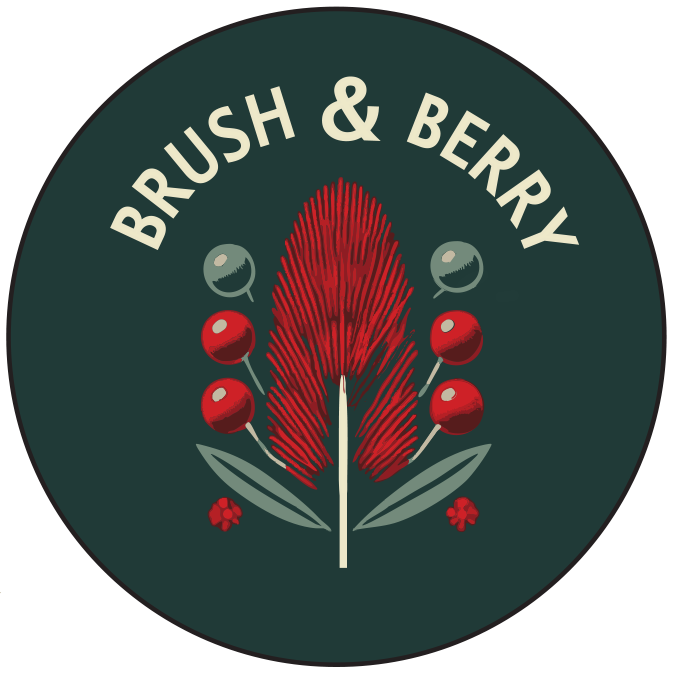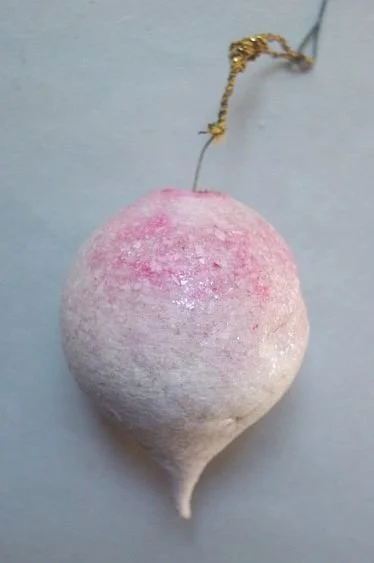Spun Cotton Fruit
A short history
Antique Spun Cotton Beet, Germany
Circa 1900
Originating in Germany in the mid-nineteenth century, spun cotton is considered to be one of the oldest Christmas ornament techniques in the world. It began as humble, home-made craft that used cotton batting waste to make ornaments such as fruits and vegetables. The shape of the ornament was constructed from wire and then the cotton was spun or hand-molded around the wire to make the desired shape. A mixture of flour and water was boiled into a thick paste and was used to coat and harden the cotton shape. Once dried, the ornaments were painted to look realistic.
Vintage Spun Cotton Fruit Purchased by Brush & Berry from UK Millinery Supply co.
Circa 1950
At the beginning of the twentieth-century and the start of the industrial revolution, spun cotton ornaments were manufactured on lathes with molds to form tightly spun shapes. The most popular versions were fruits and vegetables that were hand-painted and then dipped in a glaze that created a hard shiny shell. The most beautiful fruits were made in Germany, Czechoslovakia, Austria and japan. These fruits were meticulously hand-crafted and often decorated with mica powder, German cut glass glitter and silk leaves.
Vintage Hat With Fruit
Circa 1930
The use of fruit in millinery, or hat making, has a fascinating history, tracing back to the late 19th and early 20th centuries. The Chicago Tribune reported on fruit ribbons and artificial fruit being used as trim for Easter hats. A 1918 edition of The New York Times also mentioned artificial fruit on hats. by the 1940’s Fruit and vegetable trim on "gay hats" became a prominent feature in the 1941 millinery show at Saks Fifth Avenue, sometimes overshadowing flowers. Millinery designer Lil Picard, who worked at Bloomingdale's, found inspiration for her hats in nature, particularly ripening fruits.
Carmen Miranda In One of Her Famous Fruit Hats
Circa 1940
In summary, while fruit on hats had a brief mention in the late 19th century, the trend truly gained traction in the 1940s thanks to the influence of the 1940’s, Brazilian singer, Carmen Miranda, who was known for her fruit-adorned headdresses, even appearing in the 1943 film "The Gang's All Here," where she wore a "Tutti Frutti Hat". Miranda, along with other designers like Picard, solidified the fruit hat as a unique and memorable fashion statement.





